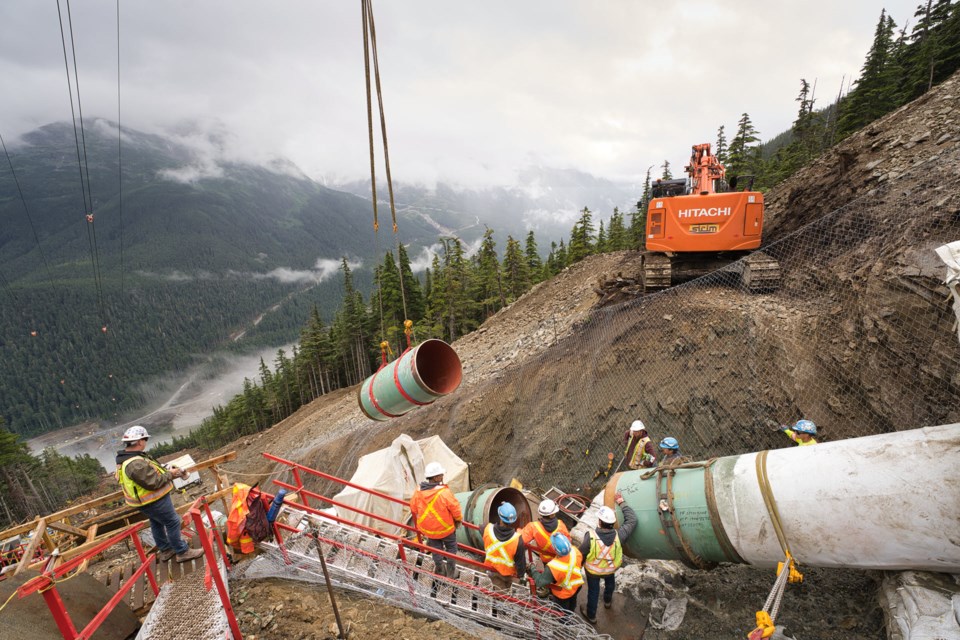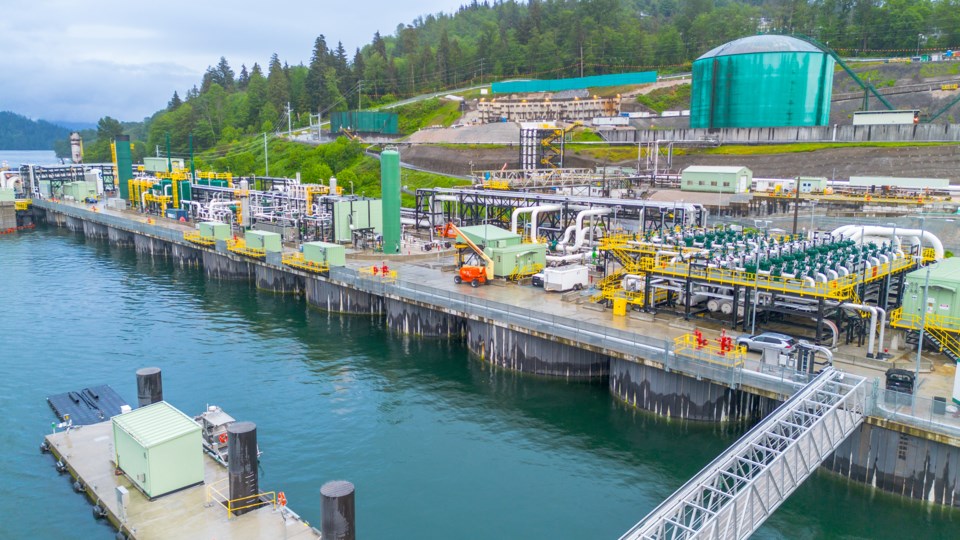In 2024, four energy mega-projects totalling $80 billion to $100 billion in private and public sector investment in B.C. were either completed and commissioned or substantially completed.
With the wind-down of construction activity on the Coastal GasLink pipeline, Trans Mountain pipeline expansion, Site C dam and LNG Canada, B.C.’s most significant economic driver—the resource sector—is now poised for deceleration and lower economic growth in the coming years, according to economists and business leaders.
“We don’t have a lot of projects that are currently in play that will take over from LNG Canada and Site C once they’re complete,” said Bryan Yu, chief economist with Central 1, at a recent energy and resources forum held by the Greater Vancouver Board of Trade (GVBOT.)
B.C. will benefit from new export revenue from LNG exports in 2025 and beyond, when LNG Canada begins exporting natural gas. Otherwise, Yu expects a more muted resource economy, and a weaker investment climate.
“What that means for us, as an economy, is a period of higher growth that we’ve seen will give way to a much slower period for the next few years,” he said.
Yu noted that B.C. has had strong economic growth compared to the rest of Canada for about a decade, often posting higher GDP growth numbers than most other provinces.

But that growth is “unsustainable,” said Don Wright, former deputy minister for the John Horgan NDP government, and now senior counsel for Global Public Affairs.
One of the growth engines in B.C. over the last decade has been population and real estate.
“In essence, B.C. has a new export industry called real estate,” Wright said. “That does bring money into the economy, but it’s not sustainable. You just can’t go on doing that forever and we are dealing with the consequences right now, where housing absolutely unaffordable.”
While B.C.’s economy is fairly diversified, Wright noted that sectors like high-tech and film and TV do not have the economic muscle of the resource sector in terms of wages, attracting investment and exports. The sector accounts for 45 per cent of B.C.’s economic activity, and provides high-paying jobs.
“I do think if you want to build your economy, it is building high-quality sectors,” he said. “It is investing in resources.”
But the resource sector in B.C. is not maximizing its potential.
“I think it is broadly attributable to the fact that we have been constraining the resource sector, and we’re not having our exports grow along with the economy,” Wright said. “Our population has been growing—our resource base has not.”
Keerit Jutla, president of the Association of Mineral Exploration (AME), noted that, in 2024, B.C.’s top three exports were energy (coal, natural gas and electricity) at $10 billion, forest products (including lumber, and pulp and paper) at $6.9 billion and minerals and metals at $4.1 billion.
There are 16 mines proposed for B.C., representing $36 billion in investment and $11 billion in tax revenue, he said. But permitting is one of the constraints delaying investment in those projects.
“In all industries, permitting delays have had a knock-on impact to investment,” he said. “In my own sector, most projects receive permits in around five months, although some applications have taken as much as three years for drilling permits.”
Permitting delays are also a problem for B.C.’s beleaguered forest sector, said Mina Lauden, vice-president of corporate affairs for Canfor Corp. (TSX:CFP).
“I was in Alberta recently, and they were talking about a two-to-three-month permitting window,” Lauden said. “We have about two to three years.”
Another constraint is access to timber. B.C. has enough timber to supply sawmills and pulp mills—it’s just often not accessible due to cost and “regulatory complexity.”
“Foundationally, for British Columbia, it’s about access to economically available fibre,” Lauden said. “We have the harvest available in the province. It’s about accessing it economically and reliably.”

As for B.C.’s natural gas sector and nascent LNG industry, there are two smaller LNG projects expected to be built in B.C.: Woodfibre LNG in Squamish and Cedar LNG in Kitimat. Larger proposals include the Ksi Lisims LNG project near Prince Rupert, and a phase 2 expansion from two trains to four for LNG Canada in Kitimat. Yu noted that the LNG Canada project alone would have contributed a one per cent “lift” to B.C.’s GDP.
Stewart Muir, CEO of Resource Works, estimated there are $110 billion worth of new LNG projects that could be built in B.C., but that they face constraints in the form of a strict provincial emissions cap. Lower LNG prices, he said, that could make those projects uneconomic.
“Going forward, whether we see or whether we can get another major [LNG project], I am not confident,” Yu said. “Maybe a second train, possibly, but another greenfield, I think it would be very challenging. So I do think that the construction cycle will be a negative drag on our economy over the next few years.”



